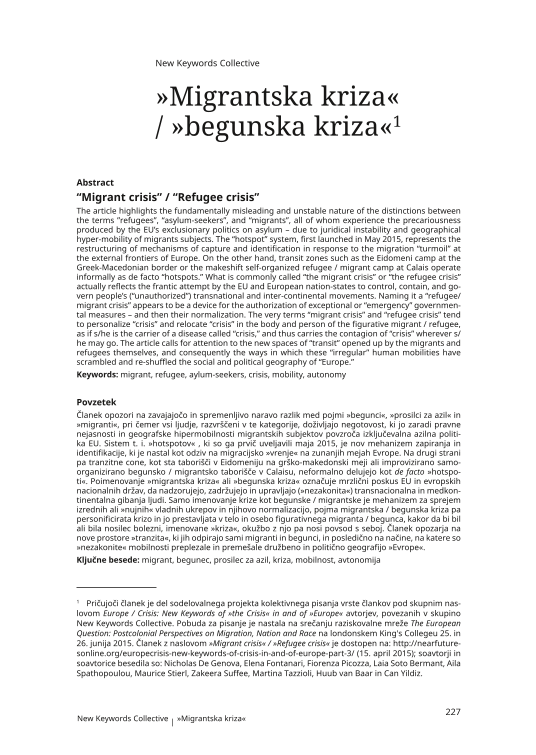The article highlights the fundamentally misleading and unstable nature of the distinctions between the terms ”refugees”, “asylum-seekers”, and “migrants”, all of whom experience the precariousness produced by the EU’s exclusionary politics on asylum – due to juridical instability and geographical hyper-mobility of migrants subjects. The “hotspot” system, first launched in May 2015, represents the restructuring of mechanisms of capture and identification in response to the migration “turmoil” at the external frontiers of Europe. On the other hand, transit zones such as the Eidomeni camp at the Greek-Macedonian border or the makeshift self-organized refugee / migrant camp at Calais operate informally as de facto “hotspots.” What is commonly called “the migrant crisis” or “the refugee crisis” actually reflects the frantic attempt by the EU and European nation-states to control, contain, and govern people’s (“unauthorized”) transnational and inter-continental movements. Naming it a “refugee/ migrant crisis” appears to be a device for the authorization of exceptional or “emergency” governmental measures – and then their normalization. The very terms “migrant crisis” and “refugee crisis” tend to personalize “crisis” and relocate “crisis” in the body and person of the figurative migrant / refugee, as if s/he is the carrier of a disease called “crisis,” and thus carries the contagion of “crisis” wherever s/ he may go. The article calls for attention to the new spaces of “transit” opened up by the migrants and refugees themselves, and consequently the ways in which these “irregular” human mobilities have scrambled and re-shuffled the social and political geography of “Europe.”




